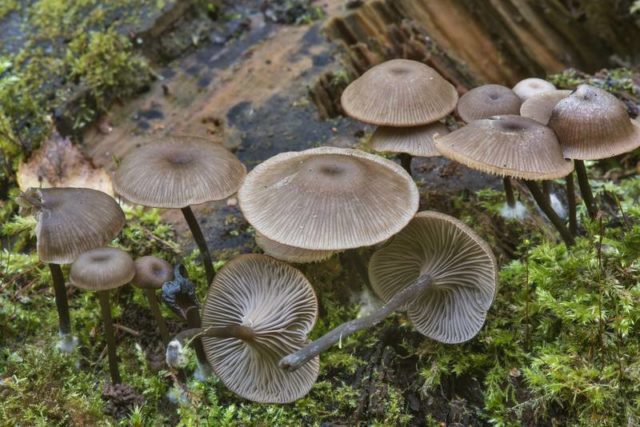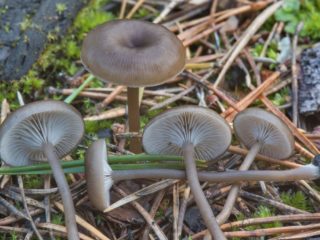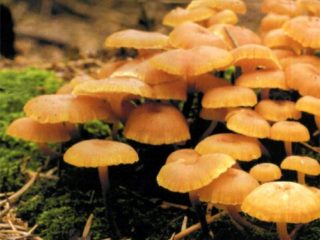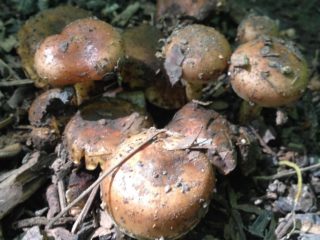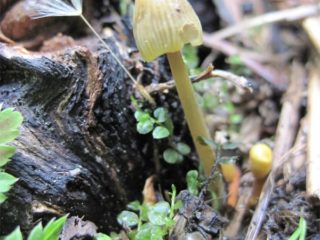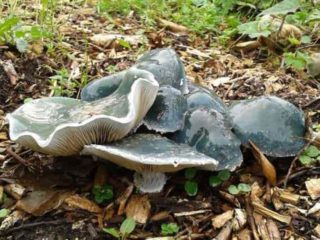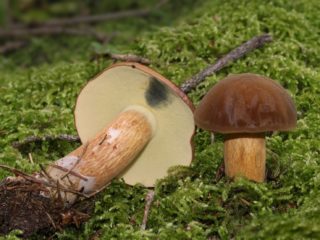Content
Omphalina cup-shaped or cuboid (lat. Omphalina epichysium), is a mushroom of the family Tricholomataceae, order Agaricales. Another name is Arrenia.
Description of omphalina goblet
Ophmalina goblet is a lamellar mushroom. The hat is small in size - the average diameter is 1-3 cm. Its shape is convex-funnel-shaped. The surface is smooth, with small stripes. The color of the cap is dark brown, sometimes in light colors.
The pulp of the fruiting body is thin - about 0.1 cm, watery, brown in color. The smell and taste are subtle and soft. The plates are wide (0.3 cm), extending onto the stalk, and are light gray in color. The spores are thin, smooth, elliptical-oblong in shape. The leg is leveled, smooth, gray-brown in color, 1-2.5 cm long, 2-3 mm wide. There is a small white pubescence at the bottom.
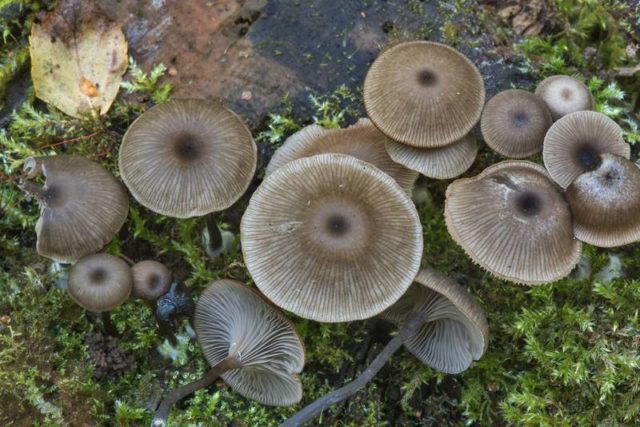
The species is distinguished by a thin leg
Where and how does it grow
Grows in small groups on deciduous and coniferous trees. It is found in the European part of Russia, in plantings of various types. Fruits in the spring-autumn period.
Is the mushroom edible or not?
The toxicity of Omphalina epichysium has not been studied, so it is classified as an inedible species.
Doubles and their differences
Omphalina cuboid has no external resemblance to other mushrooms, so doubles do not exist in nature.
Conclusion
Omphalina goblet is a little-studied representative of the “mushroom kingdom”, classified in many sources as inedible. You shouldn’t risk your health, it’s better to avoid it. The main rule of a mushroom picker: “If you’re not sure, don’t take it!”
